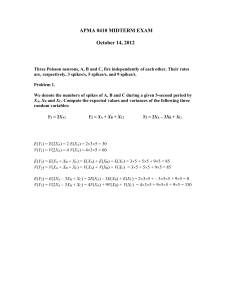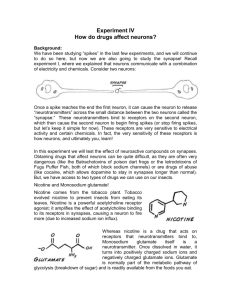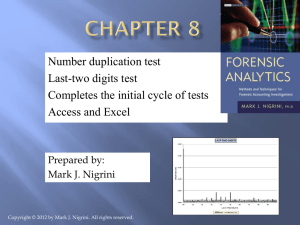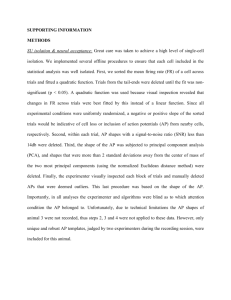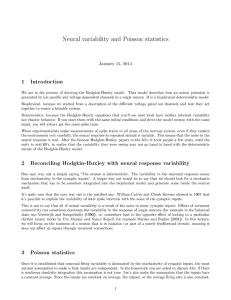midterm_2012
advertisement
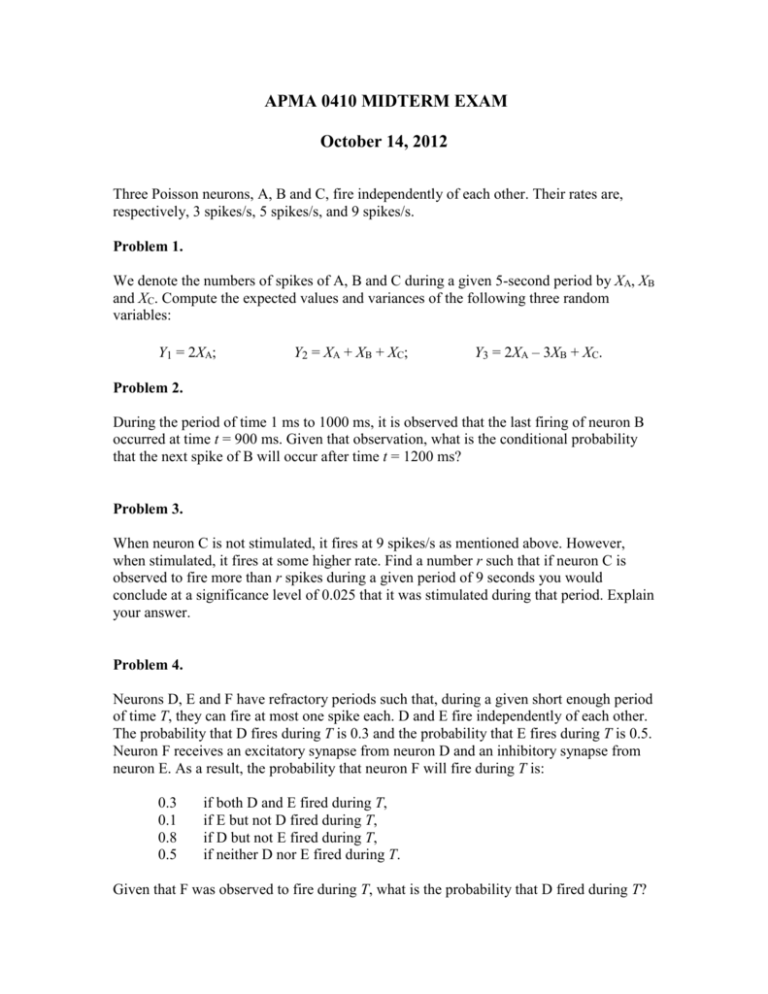
APMA 0410 MIDTERM EXAM October 14, 2012 Three Poisson neurons, A, B and C, fire independently of each other. Their rates are, respectively, 3 spikes/s, 5 spikes/s, and 9 spikes/s. Problem 1. We denote the numbers of spikes of A, B and C during a given 5-second period by XA, XB and XC. Compute the expected values and variances of the following three random variables: Y1 = 2XA; Y2 = XA + XB + XC; Y3 = 2XA – 3XB + XC. Problem 2. During the period of time 1 ms to 1000 ms, it is observed that the last firing of neuron B occurred at time t = 900 ms. Given that observation, what is the conditional probability that the next spike of B will occur after time t = 1200 ms? Problem 3. When neuron C is not stimulated, it fires at 9 spikes/s as mentioned above. However, when stimulated, it fires at some higher rate. Find a number r such that if neuron C is observed to fire more than r spikes during a given period of 9 seconds you would conclude at a significance level of 0.025 that it was stimulated during that period. Explain your answer. Problem 4. Neurons D, E and F have refractory periods such that, during a given short enough period of time T, they can fire at most one spike each. D and E fire independently of each other. The probability that D fires during T is 0.3 and the probability that E fires during T is 0.5. Neuron F receives an excitatory synapse from neuron D and an inhibitory synapse from neuron E. As a result, the probability that neuron F will fire during T is: 0.3 0.1 0.8 0.5 if both D and E fired during T, if E but not D fired during T, if D but not E fired during T, if neither D nor E fired during T. Given that F was observed to fire during T, what is the probability that D fired during T? Problem 5. We record simultaneously from 100 motor cortical neurons for a period T of length 10 ms, under one of two conditions: Rest (R) or Movement (M). In each of the two conditions, all neurons are Poisson and independent. Under condition R, all neurons fire at 5 spikes/s. Under condition M, all neurons fire at 100 spikes/s. We denote by Ui the number of spikes of neuron i for any trial such that the condition during T was R, and by Vi the number of spikes of neuron i for any trial such that the condition during T was M. We also denote: U = U1 + U2 +… + U100 V = V1 + V2 +… + V100. Is the distribution of U binomial? Is it approximately Poisson? Is it approximately normal? Specify the parameter(s) of the distribution for each positive answer. Is the distribution of V binomial? Is it approximately Poisson? Is it approximately normal? Specify the parameter(s) of the distribution for each positive answer. Bonus problem. We denote by Wi the number of spikes of neuron i during T on trials where we don’t observe the condition but are told that R and M occur with probability 0.5 each. We also denote: W = W1 + W2 +… + W100 Are W1 and W2 independent? Sketch the distribution of W. Is it binomial, approximately Poisson, approximately normal?

